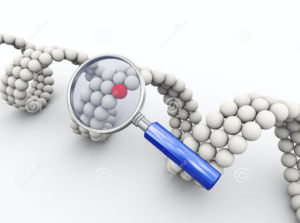Using your DNA to build a family tree (part 1)

Ron Hodgson
The hobby of discovering one’s ancestry is becoming much more popular than it used to be. It’s emerging from the dusty realms of an older generation whose focus was primarily on ensuring that the memory of our forbears and the family archives were preserved. The new target is on exploring our DNA, discovering our roots and in tapping into large data bases that open doors to previously unknown family groups. Suddenly genealogy is an interesting and even hip modern pursuit.
You’ve probably seen ads on TV and online to check out ancestry.com or myheritage.com making them two of the most current and recognized web names. The attraction of these sites is that they promise to help you determine your ethnic makeup through analysis of your DNA. You may have seen the ad featuring an actor dressed in a kilt saying he always thought he was Scottish but now he knows he has strong German ancestry so the next shot shows him wearing lederhosen and doing an alpine dance.
The cost of the DNA analysis is reasonable. You can get an analysis starting at around $100 – $150. For an additional $100 or so 23andme.com also offers a health analysis which purports to identify your potential for developing genetic health problems in the future. If you’ve ever wondered how they work, read on.
When you decide to have your DNA analyzed you must first decide on the best organization to do it. Bigger is generally better since you’ll be tapping into a larger data base. Then you’ll get the process started by sending away for a DNA sample kit. When it arrives in the mail after a week or two it will include instructions on how to submit your DNA either through saliva sample or via a cheek swab. The kit will include instructions on how to stabilize the sample, seal it in a tamper-proof package and mail it. It takes about six weeks to get the results.
When they arrive the results are summarized for you in a little global map that highlights the geographical areas of your heritage along with a listing of approximately what percentage of your DNA comes from each area. Since the majority of people in North America are not indigenous and come from other parts of the world, the DNA areas might be shown as various parts of Europe (e.g. Scandinavia) or perhaps South-east Asia. These are areas from which ethnic groups originated and migrated to receiving countries like North America or Australia.
The results can sometimes provide surprises but if you are pretty well aware of your heritage, probably not. One of the interesting results can be the identification of someone else in the database that may be related to you. When I submitted my DNA I was given a listing of 319 DNA matches of fourth cousins or less. If you see someone you’d like to contact you can do so using only a code number through the database company’s secure e-mail system.
The online companies’ system of establishing genetic groups depends on them building a large genetic genealogy database. Using their database analysis algorithms they are able to identify others in the database that may be related to you. It helps them immensely if you sign up and begin to build a public family tree since they will be able to use your research to help build what they call DNA Circles. You will be encouraged to purchase a Heritage or Ancestry membership so that you can start to build a family tree and share it with other members.
If you are starting out with genealogy and have very little family tree information it may be a perfect way to start your research. However if you are fortunate enough to have a good store of family information from one of those dusty realms I mentioned earlier, you may be giving a lot more than you are receiving. It’s up to you to decide how altruistic you want to be.
The other consideration is whether or not you want to have your DNA in any sort of database at all. In Part 2 of this series I’ll talk about the large issue of private and public databases and how online genealogy companies deal with keeping your information secure.
Meanwhile, happy hunting!